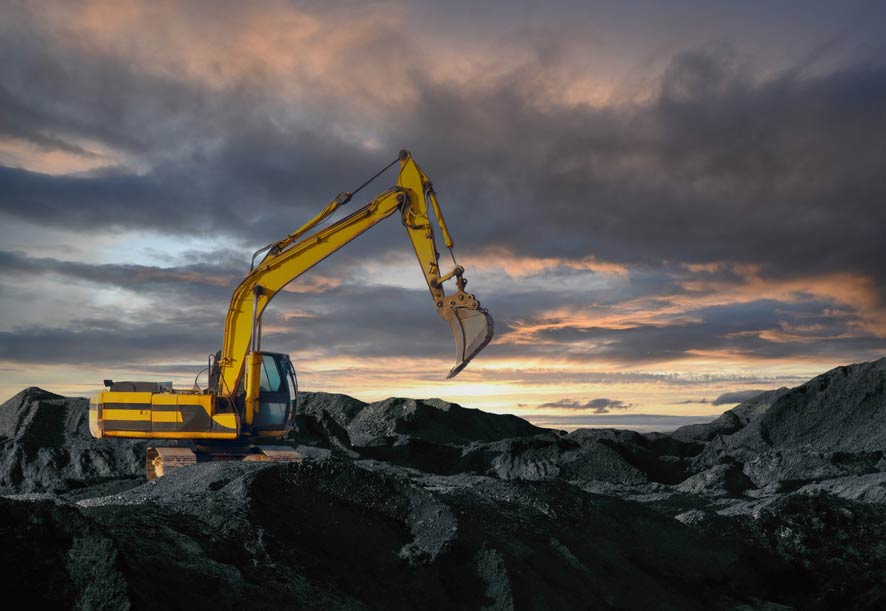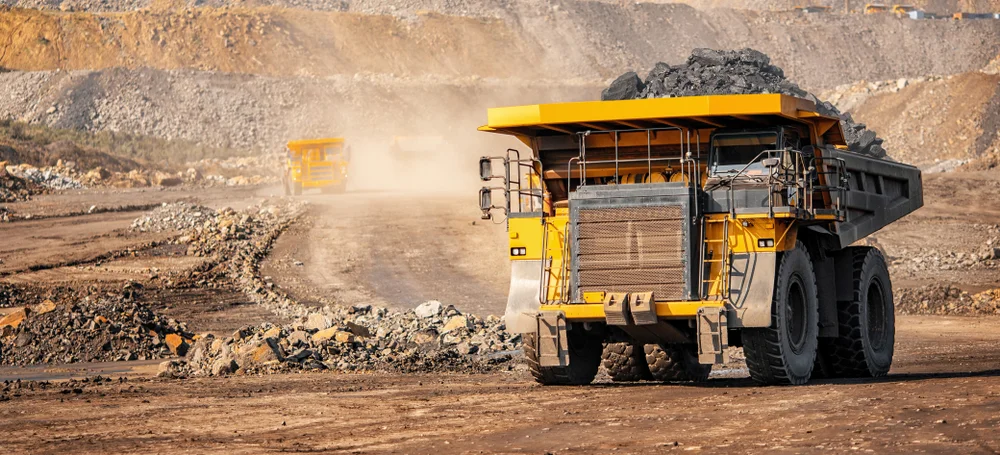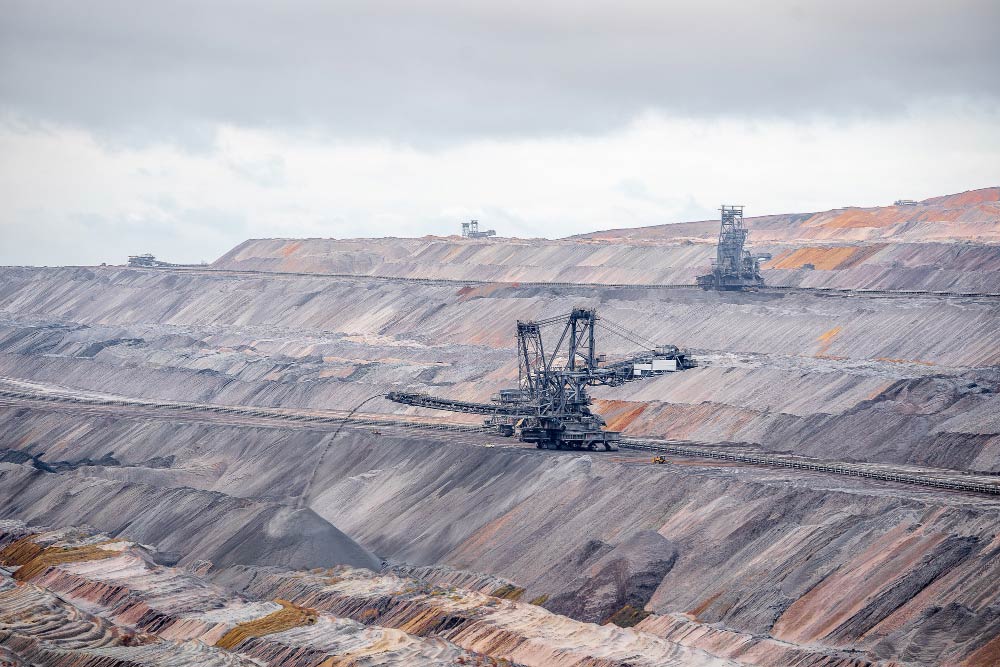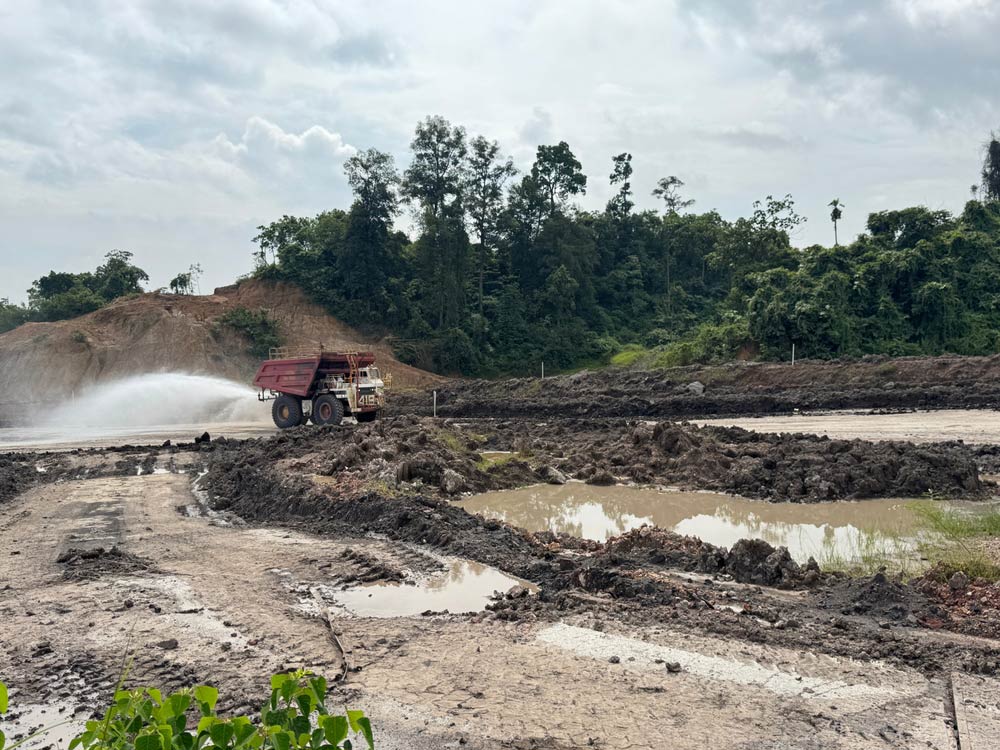Mining and extraction sites operate in some of the most demanding and high risk environments, where safety, efficiency, and environmental compliance must be maintained at all times. These sites often span large areas, from open pit mines to quarries, oil fields, and natural gas extraction zones, and they require clear and stable ground for heavy equipment, transport vehicles, and workers. Overgrown vegetation can obstruct access routes, reduce visibility, hide hazards, and even damage equipment through root intrusion or accumulated debris.
Heavy duty mulchers provide a highly effective solution for vegetation control in these settings by cutting and processing plants directly on site. The mulch layer they leave behind protects soil from erosion and helps manage dust, two persistent challenges in mining environments. Their adaptability allows them to operate in varied terrains, from flat loading areas to steep embankments, without interrupting ongoing extraction activities. This combination of operational efficiency and environmental care makes them an essential tool for modern mining and extraction operations. Similar techniques are also valuable in storm cleanup operations, where rapid hazard removal is essential for restoring access.

Mining and extraction sites operate in high-intensity environments where downtime translates directly into lost revenue. The continuous movement of haul trucks, excavators, conveyor systems, and maintenance crews demands clear, unobstructed routes at all times.
When vegetation is left unmanaged, it can quickly overrun working areas, create safety hazards, and obstruct critical infrastructure. Heavy duty mulchers provide a one-pass, high-output solution that not only removes unwanted vegetation but also processes it into a protective mulch layer that stabilises soil and reduces erosion. This ensures operations remain uninterrupted, safe, and compliant with industry regulations year-round.
These same operational principles are applied in utility corridor clearing, where access to infrastructure must remain open at all times.
Safe and efficient movement across mining zones is essential, particularly when working with oversized vehicles and equipment that require wide, stable pathways. Overgrown vegetation can rapidly narrow haul roads, conceal potential hazards, and reduce the maneuvering space required for heavy machinery. In high-traffic areas such as pit access points or material transfer zones, even minor obstructions can lead to delays, near-miss incidents, or costly accidents.
With consistent vegetation control, mining operators can:
Beyond productivity, open and visible work zones are also a compliance matter. Most mining jurisdictions require operators to maintain clear, accessible infrastructure to meet occupational health and safety regulations, making regular mulching a proactive risk management measure. This approach is also key in pipeline right-of-way maintenance.
Uncontrolled vegetation poses risks far beyond reduced visibility. In arid and semi-arid mining regions, dry brush and tall grass create significant wildfire threats, especially near fuel storage areas or active processing facilities. In wetter environments, invasive root systems can undermine foundations, damage buried pipelines, and create instability in retaining walls. Additionally, organic debris can clog drainage systems, leading to erosion, flooding, or waterlogging, all of which can halt operations and damage valuable assets.
Heavy duty mulchers provide targeted control that addresses these risks effectively:
By eliminating these hazards before they escalate, mulching operations extend the lifespan of mining equipment, safeguard critical infrastructure, and support environmental compliance obligations, allowing mining companies to maintain both operational and reputational stability.
This type of targeted vegetation management is also common in fire prevention and firebreak projects, where controlling fuel load is essential for safety.
Mining and extraction operations run on tight schedules where any interruption in workflow can lead to significant production losses.
Delays caused by overgrown access roads, obstructed haul routes, or encroaching vegetation around machinery can ripple through the entire operation. Heavy duty mulchers deliver a major advantage by performing vegetation cutting, shredding, and ground treatment in a single pass.
This eliminates the need for multiple pieces of equipment or lengthy debris removal processes, allowing vegetation management to integrate seamlessly into ongoing mining activities without halting production.

Mining zones are rarely located in easy-to-access areas. From remote open-pit mines in arid regions to dense, forest-adjacent extraction sites in tropical climates, each environment presents unique maintenance challenges.
Dust, heat, rocky terrain, and steep slopes can all slow conventional vegetation clearing methods, but heavy duty mulchers are specifically engineered to withstand and excel in these demanding conditions.
Their advantages include:
Because they can process large amounts of vegetation or rocky terrains in a short timeframe, mulchers allow mining crews to complete maintenance work alongside extraction activities, avoiding the costly downtime associated with multi-step clearing operations.
Mining and extraction sites are often vast and complex, combining active production zones with logistical and environmental management areas. These can include haul roads, conveyor corridors, equipment storage yards, tailings dams, and designated buffer zones for environmental protection. Managing vegetation across such varied terrain traditionally requires different equipment types, which increases costs and complicates scheduling.
Heavy duty mulchers solve this problem by transitioning seamlessly between site types without the need for machine swaps or extensive setup changes.
This adaptability delivers key benefits:
With this level of flexibility, mining companies can maintain a safe, efficient, and compliant working environment across their entire footprint, reducing both direct costs and long-term operational risks.
In mining and extraction environments, vegetation management is not an occasional task but a continuous operational necessity. Overgrowth can compromise safety, restrict access, accelerate equipment wear, and even place a site at risk of regulatory non-compliance.
Implementing a well-structured mulching program ensures that vegetation control is not reactive but preventive, supporting uninterrupted production and reinforcing environmental stewardship.

Successful vegetation control in mining areas begins long before the first machine starts. It requires close collaboration between site managers, safety officers, and environmental specialists to create a plan that addresses operational priorities without compromising ecological responsibilities. The planning phase should go beyond simple scheduling, incorporating hazard analysis, environmental risk assessments, and logistical coordination.
An effective plan will typically include:
By combining operational insight with environmental considerations, mining companies can ensure that vegetation control is both targeted and cost-effective, allowing crews to focus on priority zones while maintaining overall site safety.
Mulching in mining zones is not just about clearing, it is a strategic environmental management tool. When performed correctly, mulching contributes directly to dust suppression, erosion control, and post-mining land rehabilitation efforts, making it a valuable part of a mine’s sustainability strategy.
To maximise these benefits, operators should:
By embedding mulching within the broader framework of the site’s environmental management plan, mining companies can turn a necessary maintenance activity into a proactive step toward sustainable land stewardship. This approach not only protects the operational footprint but also strengthens the company’s reputation with regulators, local communities, and stakeholders.
“In mining, safety and productivity go hand in hand. Heavy duty mulchers keep our sites clear, accessible, and compliant, all while protecting the land for future use.”

Mining operations operate under some of the strictest safety and environmental oversight in the industrial sector. Any vegetation management activity, including mulching, must be executed with absolute adherence to these standards.
Failure to do so can result in costly penalties, delays in production, or even suspension of operational permits. Beyond compliance, a robust safety and regulatory framework also reinforces a company’s commitment to protecting its workforce, the surrounding environment, and the communities in which it operates.
Mulching within an active mining site presents unique safety challenges. Heavy-duty mulchers often operate alongside haul trucks, excavators, and drilling equipment, all within a fast-paced environment where visibility can be reduced by dust, terrain, and weather conditions. Without strict protocols, the risk of accidents increases significantly.
Key measures to safeguard workers and maintain operational flow:
By embedding these practices into daily operations, mining companies significantly reduce accident risks and ensure that vegetation control integrates smoothly with core site activities rather than disrupting them.
In addition to safety obligations, mining companies are bound by strict environmental compliance requirements that govern both operational and post-operational land use. Vegetation control plays a direct role in meeting these obligations, particularly when it comes to erosion prevention, habitat protection, and rehabilitation of disturbed areas.
Regulatory compliance often requires:
By meeting or exceeding these standards, mining operators not only maintain their license to operate but also strengthen their credibility with regulators, investors, and the public. Demonstrating proactive environmental responsibility helps build long-term trust and supports smoother permitting for future projects.
If you operate a mining or extraction site, you know that overgrown vegetation is more than an inconvenience, it is a threat to safety, productivity, and compliance. Our heavy duty mulching services are purpose-built for the demands of the mining industry, combining speed, precision, and environmental care in a single operation. Whether you need to clear haul roads, maintain secure perimeters, protect drainage systems, or meet stringent environmental regulations, we have the expertise, specialised equipment, and trained crews to deliver results.
We work seamlessly alongside your operational teams to minimise downtime, adapt to challenging terrains, and ensure every area of your site is maintained to the highest safety and compliance standards. Contact us today to discuss your vegetation management needs and request a detailed, tailored quote that keeps your site safe, compliant, and ready for maximum productivity year-round.
To provide the best experiences, we use technologies such as cookies to store and/or access device information. Consenting to these technologies will allow us to process data such as browsing behavior or unique IDs on this site. Failure to consent or withdrawing consent may adversely affect certain features and functions.